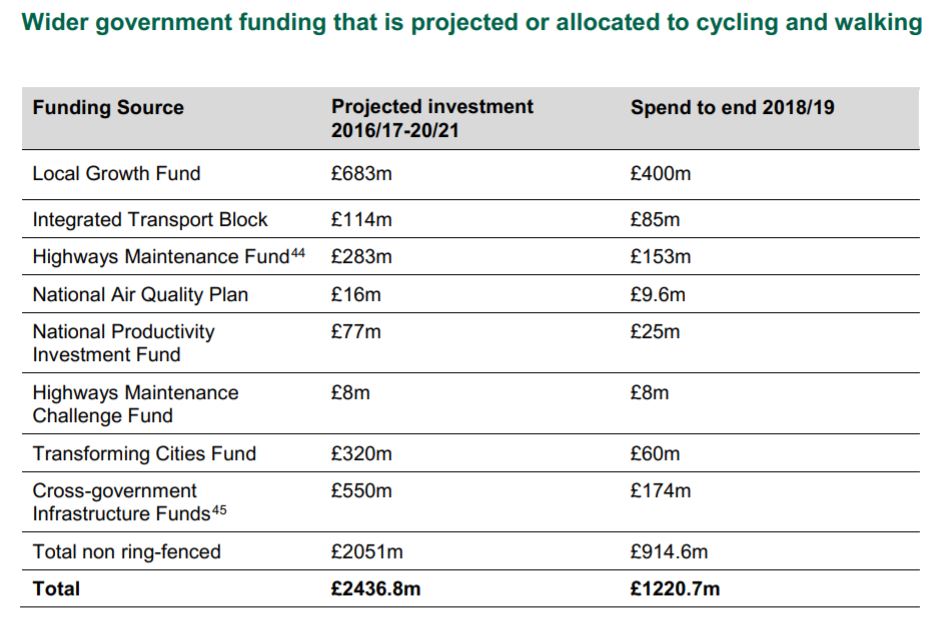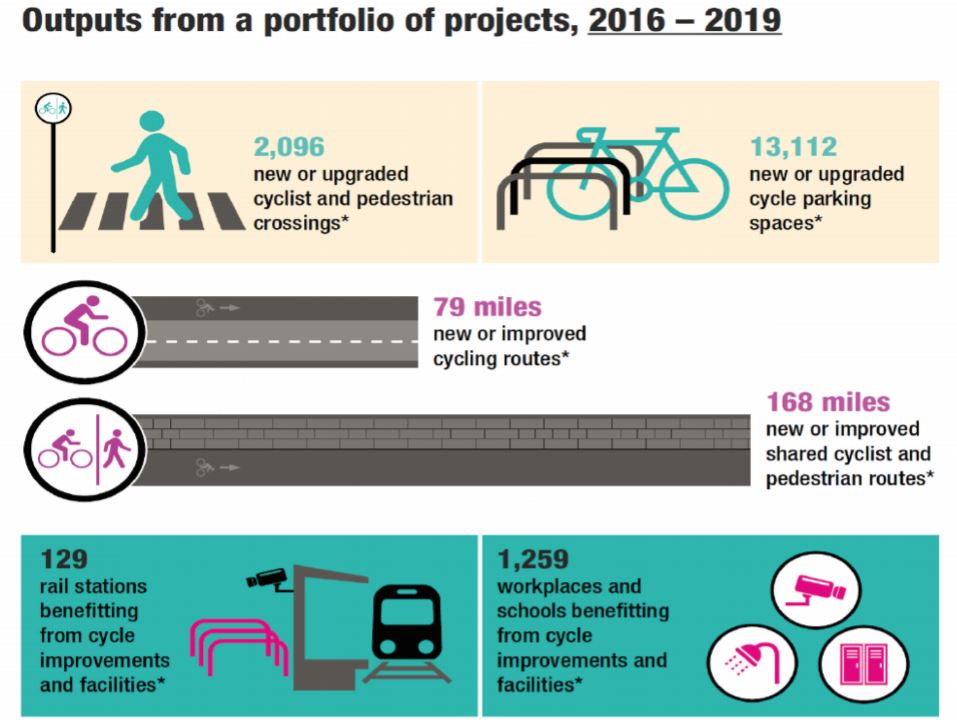Cycling and Walking Investment Strategy has “some way to go”, says update
The first report back to Parliament on the progress of the statutory Cycling and Walking Investment Strategy says that the UK has “some way to go to deliver the ambition” and that a spending review due later in 2020 will “be the vehicle for identifying both the scale and type of investment required to meet our (Government) aims and targets.”
The report begins with cycling and walking Minister Chris Heaton-Harris outlining how Department for Transport analysis has found the current funding levels are likely to get the UK “around 40%” of the way towards the ambition to double cycling levels by 2025.
Heaton-Harris offers up some statistics within his opening assessment, including the DfT finding that cycling stages have increased by 2% since 2015, which was the most recent low. As shown in the DfT data, cycling levels have been largely flat in the UK since 2002, actually slightly down on those levels in 2018.
“I recognise that we still have some way to go to deliver the ambition set out in the Strategy. The forthcoming multi-year “Spending Review”, expected later in 2020, will be the vehicle for identifying both the scale and type of investment required to meet our aims and targets and for considering any revisions to our existing objectives,” wrote Heaton-Harris.
This is followed by a recognition that “substantial further investment” is required over the next five years, something that the Cycling Minister hopes will come to fruition.
“The £350 million Cycle Infrastructure Fund announced in the Conservative Party Manifesto is only the start of this investment. This will be further built upon by the creation of a long-term programme and budget that dramatically increases investment in cycling and walking, including through the £100 billion of additional infrastructure spending announced for national renewal of roads, rail and other infrastructure that helps to generate growth,” adds Heaton-Harris.
At £350 million, over the five year term cycling can expect to receive £70 million annually as it stands. This represents a budget cut to ring fenced funding. With high quality cycling infrastructure said to cost around £1.45 million per kilometre, cycling organisations have leaned on the Minister to vastly improve upon the funding tally in order to grow cycling levels and improve social elements such as health and air quality.
However, the £2.4 billion mentioned in today’s cycle training story comes up once again and we can now confirm this to be a five year investment, so worth £400 million a year. This is said to be a “doubling of the £1.2 billion originally assigned to the cycling and walking investment strategy.

The document offers: “The CWIS originally projected £1.2 billion of investment to 2020/21. This has already been invested to the end of 2018/19 on cycling and walking across all relevant government funding streams, including almost £390 million of ring-fenced funding. This funding covers England, outside London, and TfL provides further funding for London.”
 The mention of ring-fencing is key here, with the gap between the £390 million and the total tally made up of wider infrastructure and clean air projects that might happen to benefit cycling and walking, but are in no way bound to. Thus bus projects may well prove the beneficiary of the funding that is marketed as being for active travel.
The mention of ring-fencing is key here, with the gap between the £390 million and the total tally made up of wider infrastructure and clean air projects that might happen to benefit cycling and walking, but are in no way bound to. Thus bus projects may well prove the beneficiary of the funding that is marketed as being for active travel.
Under the header of overall progress, the report outlines how around half of the original strategy’s 26 goals are “substantively completed”, while the remainder are long-term ambitions that will run onwards to 2020/21. These include projects like the expanded BikeAbility programme reported on earlier today that will now train 100% of children in England.
Encouragingly, the second point on overall progress refers to the creation of safe infrastructure and additional actions to be taken. The document suggests that local authorities have a UK average of 80 miles of cycle lanes, though the definition of cycle lane is tough with no national design standard to benchmark against. This is said to represent 40 miles of cycle lane for every 1,000 miles of road.
As part of the additional actions we are to expect an upgrade of the National Cycle Network and progress on better enabling last-mile delivery of goods through the use of e-Cargo bikes.
On this note, the document refers to the April 1st launch of a £2 million e-Cargo bike grant, delivered by the Energy Saving Trust with the support of the BAGB and UK Cycle Logistics Federation. This scheme was recently extended.
 The rollercoaster ride that has been the HS2 rail line’s development is mentioned too. According to the report an additional £20 million funding provided to Sustrans will form part of a plan to build cycle routes alongside the proposed route, as and when the project is finalised. The funding is not exclusively for alignment with the rail route, however and seemingly too small a funding pot to lay much tarmac.
The rollercoaster ride that has been the HS2 rail line’s development is mentioned too. According to the report an additional £20 million funding provided to Sustrans will form part of a plan to build cycle routes alongside the proposed route, as and when the project is finalised. The funding is not exclusively for alignment with the rail route, however and seemingly too small a funding pot to lay much tarmac.
When it comes to the design of cycling infrastructure, the progress report refers to a publication of a best practice guide to design that was set for Autumn of 2019, but is as yet to break cover.
Crucial to understanding where the greatest potential to develop cycling levels lies, the Propensity to Cycle Tool is being further developed as an open source project in partnership with four universities. Dr Rachel Aldred, who wrote on the subject for CI.N, is one of the leaders of developing this tool. A “schools layer” has been added recently to incorporate cycle to school data.



